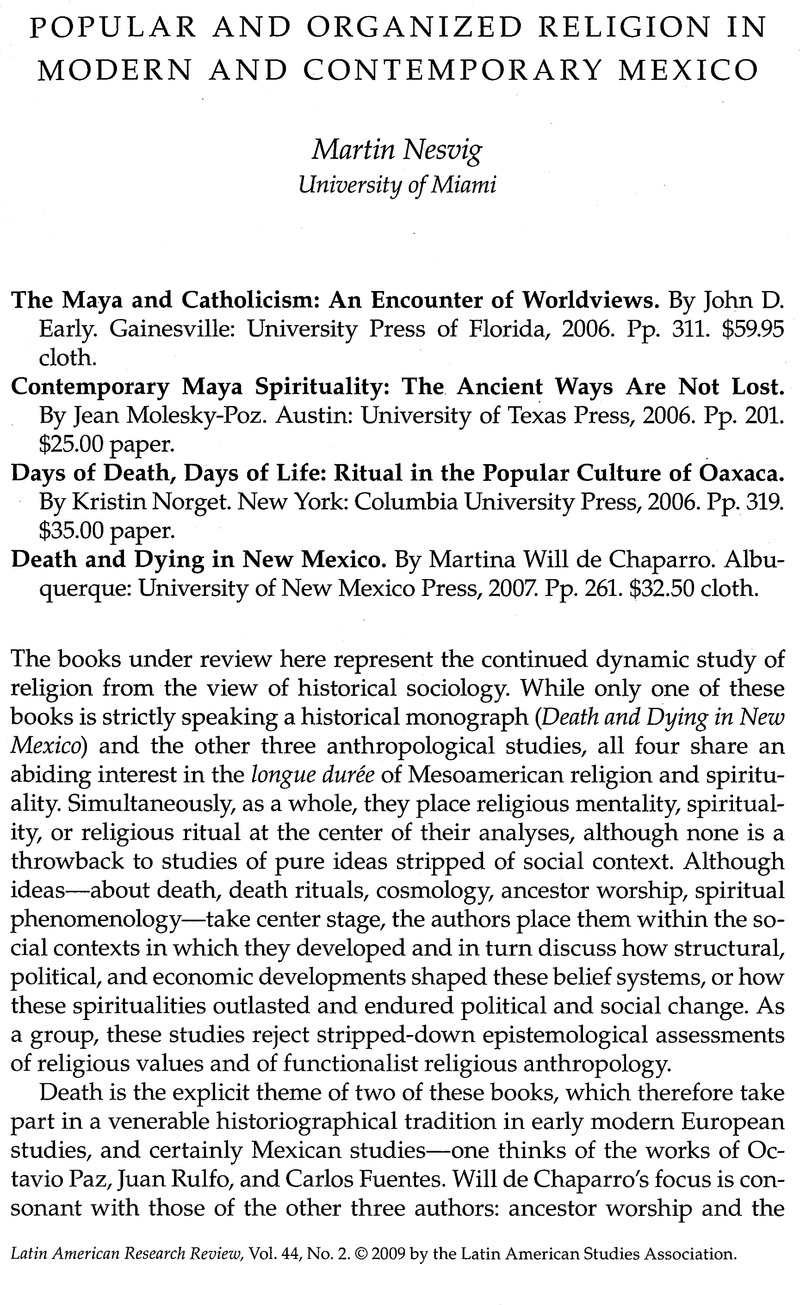No CrossRef data available.
Published online by Cambridge University Press: 05 September 2022

1. Pamela Voekel, Alone before God: The Religious Origins of Modernity (Durham, NC: Duke University Press, 2002); John McManners, Death and the Enlightenment: Changing Attitudes to Death among Christians and Unbelievers in Eighteenth-Century France (Oxford: Clarendon Press, 1981); Michel Vovelle, Vision de la mort et de l'au-delà en Provence d'après les autels des âmes du purgatoire, XVe-XXe siècles (Paris: A. Colin, 1970); Phillipe Ariès, Hour of Our Death, trans. Helen Weaver (New York: Knopf, 1981); Carlos M. N. Eire, From Madrid to Purgatory: The Art and Craft of Dying in Sixteenth-Century Spain (Cambridge: Cambridge University Press, 1995); Angélico Chávez, My Penitente Land: Reflections on Spanish New Mexico (Albuquerque: University of New Mexico Press, 1974); Michael P. Carroll, The Penitente Brotherhood: Patriarchy and Hispano-Catholicism in New Mexico (Baltimore: Johns Hopkins University Press, 2002).
2. Claudio Lomnitz, Death and the Idea of Mexico (Brooklyn, NY: Zone Books, 2005); Francie Chassen de López, From Liberal to Revolutionary Oaxaca: The View from the South, Mexico 1867–1911 (University Park: Pennsylvania State University Press, 2002); Mark Overmyer-Velázquez, Visions of the Emerald City: Modernity, Tradition, and the Formation of Porfirian Oaxaca, Mexico (Durham, NC: Duke University Press, 2006); Edward Wright-Rios, Revolutions in Mexican Catholicism: Vision, Shrine and Society in Oaxaca, 1887–1934 (Durham, NC: Duke University Press, 2009); Daniela Traffano, Indios, curas y nación: La sociedad indígena frente a un proceso de secularización, Oaxaca, siglo XIX (Turin: Otto, 2001).
3. Laura Matthew and Michel R. Oudijk, eds., Indian Conquistadors: Indigenous Allies in the Conquest of Mesoamerica (Norman: University of Oklahoma Press, 2007).
4. Matthew Restall, Maya World: Yucatec Culture and Society, 1550–1850 (Stanford, CA: Stanford University Press, 1997); Inga Clendinnen, Ambivalent Conquests: Maya and Spaniard in Yucatan, 1517–1570 (Cambridge: Cambridge University Press, 1987); Nancy M. Farris, Maya Society under Colonial Rule: The Collective Enterprise of Survival (Princeton, NJ: Princeton University Press, 1984); Adrian van Oss, Catholic Colonialism: A Parish History of Guatemala, 1524–1821 (Cambridge: Cambridge University Press, 1986); Edward O'Flaherty, Iglesia y sociedad en Guatemala, 1524–1563: Análisis de un proceso cultural, trans. Elias Zamora (Seville: University of Seville, 1984).